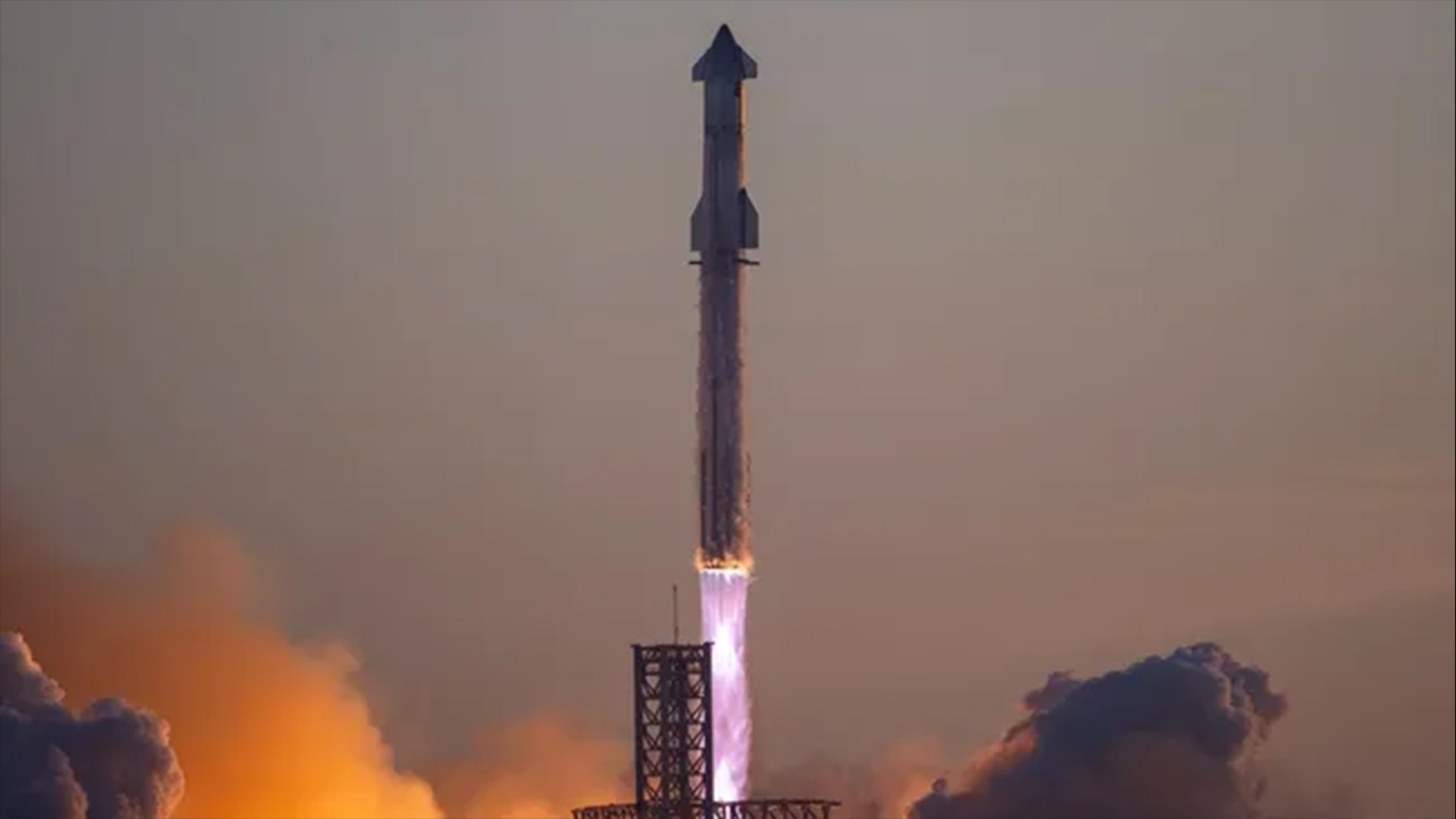
SpaceX's giant Starship rocket apparently performed better on its second-ever test flight than its explosive end would suggest.
The mission launched from SpaceX's Starbase site in South Texas on Nov. 18 of last year. It ended about eight minutes after liftoff, when Starship's upper-stage spacecraft (called, somewhat confusingly, Starship), detonated high in the Texas sky.
But the vehicle was performing quite well until that point, and likely would have continued on that successful path had it been a normal, operational flight, according to SpaceX founder and CEO Elon Musk.
"So, Flight 2 actually almost made it to orbit," Musk said in a recent company update, which SpaceX posted on X on Jan. 12. The explosion was caused by a venting of liquid oxygen, he added — and there was liquid oxygen left to vent only because Starship wasn't hauling any satellites that day.
"We normally wouldn't have that liquid oxygen if we had a payload," Musk said in the update, which he gave at Starbase to a crowd of SpaceX employees. "So, ironically, if it had had a payload, it would have reached orbit."
SpaceX is developing Starship to help humanity settle Mars and achieve other bold exploration feats. The vehicle consists of a first-stage booster called Super Heavy and the Starship upper stage, which is about 165 feet (50 meters) tall. Both of these elements are designed to be fully and rapidly reusable.
SpaceX has launched two Starship test flights to date, both of them from Starbase. The first, which lifted off on April 20 of last year, ended about four minutes into flight with a controlled detonation. SpaceX ordered that explosion because Starship suffered several serious problems, most notably the failure of its two stages to separate.
Get the world’s most fascinating discoveries delivered straight to your inbox.
The Nov. 18 flight went much more smoothly, as Musk noted, giving him optimism for future missions.
"I think we've got a really good shot of reaching orbit with Flight 3, and then a rapid cadence to achieve full and rapid reusability," he said in the recent update. SpaceX plans to launch Flight 3 next month, provided the U.S. Federal Aviation Administration issues a license in time. (The FAA is currently overseeing an investigation into what happened on Flight 2.)
Musk hopes this anticipated rapid development leads to an operational capability soon; he said SpaceX aims to start launching its big, next-generation Starlink internet satellites aboard Starship by the end of the year.
NASA wants to see Starship get up and running soon as well; the agency selected the vehicle to be the first crewed lander for its Artemis program of moon exploration. Starship will put astronauts down on the lunar surface for the first time on the Artemis 3 mission, which is currently targeted to launch in September 2026.
Starship is already the biggest and most powerful rocket ever built. It stands about 400 feet (122 meters) tall and generates 16.7 million pounds of thrust at liftoff — nearly twice as much thrust as NASA's Space Launch System megarocket, a core part of the Artemis program.
But the current Starship is just a prototype. The final, operational version will be even bigger, Musk said in the recent update.
SpaceX is working on "a sort of a Version 2 ship that will be more reliable, better performance, [with better] endurance," he said. "We've got a Version 3 ship design that will stretch, that will be even taller — probably end up being, I don't know, 140 meters [459 feet] before it's all said and done, maybe 150 [492 feet] in the end, in length."
"So, it'll be even taller than it currently is," Musk added with a chuckle.
Originally posted on Space.com.




